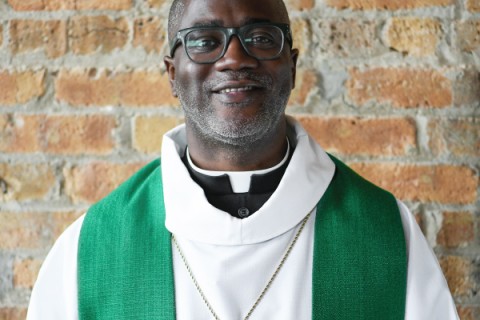Christianity by the numbers
With 2.18 billion adherents, Christianity has become a truly global
religion over the past century as rapid church growth in developing
nations offset declines in Christianity's traditional strongholds,
according to a new comprehensive report.
Billed as the broadest
and most reliable study to date, the Pew Research Center's "Global
Christianity" report on self-identified Christian populations uses more
than 2,400 sources of information, especially census and survey data.
Findings
reveal major shifts since 1910, when two-thirds of the world's
Christians lived in Europe. Now only one in four Christians reside in
Europe. Most of the rest are distributed across the Americas (37
percent), sub-Saharan Africa (24 percent) and the Asia-Pacific region
(13 percent). The broad trends have been known for decades, but the new
report provides some unexpected perspectives.
Read our latest issue or browse back issues.
"In two out of
three countries in the world, the majority of the population identifies
as Christian," said Conrad Hackett, lead researcher on the report. "I
had no idea about that. . . . I was surprised."
The report, issued
December 19, confirms Christianity's standing as the religion having
the largest following, with 32 percent of the global population. Islam
is second with about 23 percent, according to a 2009 Pew report.
The
new study, based on a nation-by-nation analysis, found that Catholics
make up slightly more than half of the world's Christians—50.1 percent.
Protestants, broadly defined, account for 36.7 percent and Orthodox
Christians nearly 12 percent. Pew researchers put "other Christians,"
such as Mormons and Jehovah's Witnesses, at about 1 percent.
A close look at the study reveals these details:
-
Although Christianity traces its beginnings to the Middle East and
North Africa, only 4 percent of residents in these regions claim the
Christian faith today. - The faith has grown exponentially in
sub-Saharan Africa, from just 9 percent of the population in 1910 to 63
percent today. Nigeria, home to more than 80 million Christians, has
more Protestants than Germany, where the Protestant Reformation began.
As
a result of historic missionary activity and indigenous Christian
movements by Africans, six in ten sub-Saharan Africans identify with
Christianity; only one in ten did in 1910.
For its part, Europe is
more religiously diverse than it was in 1910, when 94 percent were
Christian. Still, Europe hasn't abandoned its Christian heritage,
according to the report. Today, 76 percent of Europeans self-identify as
Christian.
"Many people may have the impression that a smaller
percentage of Europe claims to be Christian" than is actually the case,
Hackett said.
The study also sheds light on the difficult question
of how many Chinese are Christians. Researchers have struggled for
reliable numbers since China's policies on religion are thought to
discourage Christians from self-identifying as such in official
surveys. Adjusting for such variables, Pew researchers believe that
Christianity has flourished despite a policy forbidding Christianity
among Communist
Party members. Researchers estimate that the
Christian community in China includes 5 percent of the population, or
67 million. —RNS





